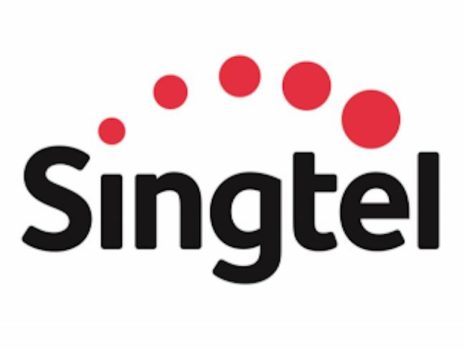Singtel: TV not an outdated advertising platform

Singtel is beefing up its advertising platform to glean better insights from its pay TV audience and offer marketers more effective customer targeting.
Contrary to common perception, the Singapore telco believes television is not an outdated advertising platform, but one that is evolving into a new category where online video content is being streamed to computers and smart devices, as well as interactive broadcasts and on-demand content.
What has become archaic is the buying of TV ad space to target generic audiences, Singtel Advertising's chief revenue officer Anthony Shiner told ExchangeWire, noting that the industry must move from media buying to audience buying.
There are currently more than 418,000 subscribers of its pay TV service, formerly called mio TV and now renamed Singtel TV, following the company's recent brand revamp.
To more accurately monitor consumption and allow brands to develop targeted campaigns, it has inked a new partnership with Kantar Media, which specialises in audience measurement.
The alliance introduces Return Path Data (RPD) technology on Singtel's TV audience measurement platform, capturing data across its entire subscriber base. This will generate more accurate analysis of all audience segments including niche channels, allowing Singtel TV advertisers to access better audience targeting as well as enabling programming to evolve with changing viewer demand.
Shiner explained that data was previously stored in its set-up boxes and transmitted to a server at different points in time, such as when the set-up box ran out of data storage capacity or when data was manually recalled by the server. "The inconsistency in the data collection time frame for each set-up box made it virtually impossible to aggregate TV data and draw deeper consumer behaviour insights," he said.
The RPD technology captures data automatically on a second-by-second basis. With this more precise monitoring of in-home consumer behaviour, the Singapore telco expects the automated data platform to be able to target specific audience groups based on attitudes, behaviour and consumption patterns.
"With return-path technology implemented across all Singtel TV set-up boxes, data can now be consistently delivered or returned to the server in real-time, and audience viewing behavior analysed with currency, accuracy and granularity," Shiner said.
For advertisers, this means they can gain and act on new audience segmentations as well as insights that reflect current behavioural patterns, rather than activities that are weeks or months outdated, he added.
Analytics on Singtel TV viewing will allow advertisers to know, for example, the optimal channels and programs on which to advertise, he said, noting that the notion of "prime time" may differ from channel to channel.
For instance, kids channels may clock a viewership spike between 6pm and 10pm, and this time interval would be deemed prime time for advertisers targeting a young audience.
"Having access to this information allows for more efficient spot buys. Without RPD technology, deriving such insights wouldn't have been possible," Shiner added.
Other media tools including Gross Rating Points (GRP) and Target Audience Rating Points (TARPs) also will be integrated with Singtel's RPD. From January this year, advertisers and media agencies in Singapore and across the region will be able to access rating reports detailing the impact of marketing campaigns launched on the pay TV service.
Shiner said: "Automation and the availability of highly granular--but encoded and anonymised--data, will play an integral role in helping advertisers keep up with consumers' ever-changing television viewing behaviour.
"RPD technology has already provided us with a series of insights, including time spent per day watching pay TV and the most watched channels during the course of each week," he said, noting that Singtel's data revealed that apart from sports, commonly perceived to be the strongest performing genre, there also was significant audience interest in kids and local ethnic content.
He added that, moving forward, more and better insights will guide the company's pay TV programming plans.
"Due to the availability of an unprecedented amount of data, 2015 will see a fundamental shift in the way media is planned, bought and evaluated by advertisers and agencies. It is imperative that we provide analysis on what people are doing both on TV and off TV, [including] mobile, digital, and out-of-home," he said.
When asked, Shiner declined to reveal how much advertising revenue Singtel TV generates as well as the proportion the platform contributes to the company's overall advertising revenue.
The Kantar deal was signed with Singtel Advertising, which operates under the Singapore company's group digital life business unit.
Kantar tracks more than 4 million brands across 50 countries, processing 20 million posts and articles a day from 20 million blogs, 10 million forums, and 40,000 news sites. In China alone, it collects 3 million comments each day about brands, products, and attributes in China alone.
Multiple access devices make data management challenging
Consumers today create and access data on multiple devices and platforms, making it complex to manage the multitude of datasets.
Shiner noted that the average Singaporean owned more than three devices and spent more than seven hours daily consuming content across multiple screens, including televisions, computers, smartphones, and tablets.
"With consumers toggling across these multiple screens at multiple times during the course of the day, the challenge for brands and marketers is deriving or discovering the technology that can identify and target the same user, with a consistent set of brand messages across all platforms," he said.
"Because of that, the key challenge from a data management viewpoint is, first, the ability to store, aggregate and make sense of large data volumes from a single source; and second, the ability to integrate data from multiple devices, which come in multiple formats."
As an operator of services that cut across different platforms including mobile, TV, and web, Singtel is exploring the best ways to manage its audience data and targeting.
Eventually, the telco wants to be able to track consumer behaviour as it transitions from TV to other devices.
"For us, developing an integrated suite of analytics capabilities that can deliver such information to marketers is what we're working towards," he said, adding that Singtel is also working with data management platform provider, Lotame.
AdvertiserAgencyAnalyticsAPACBrandingDataDigital MarketingMobilePerformanceSingaporeTargetingTVVideo









Follow ExchangeWire